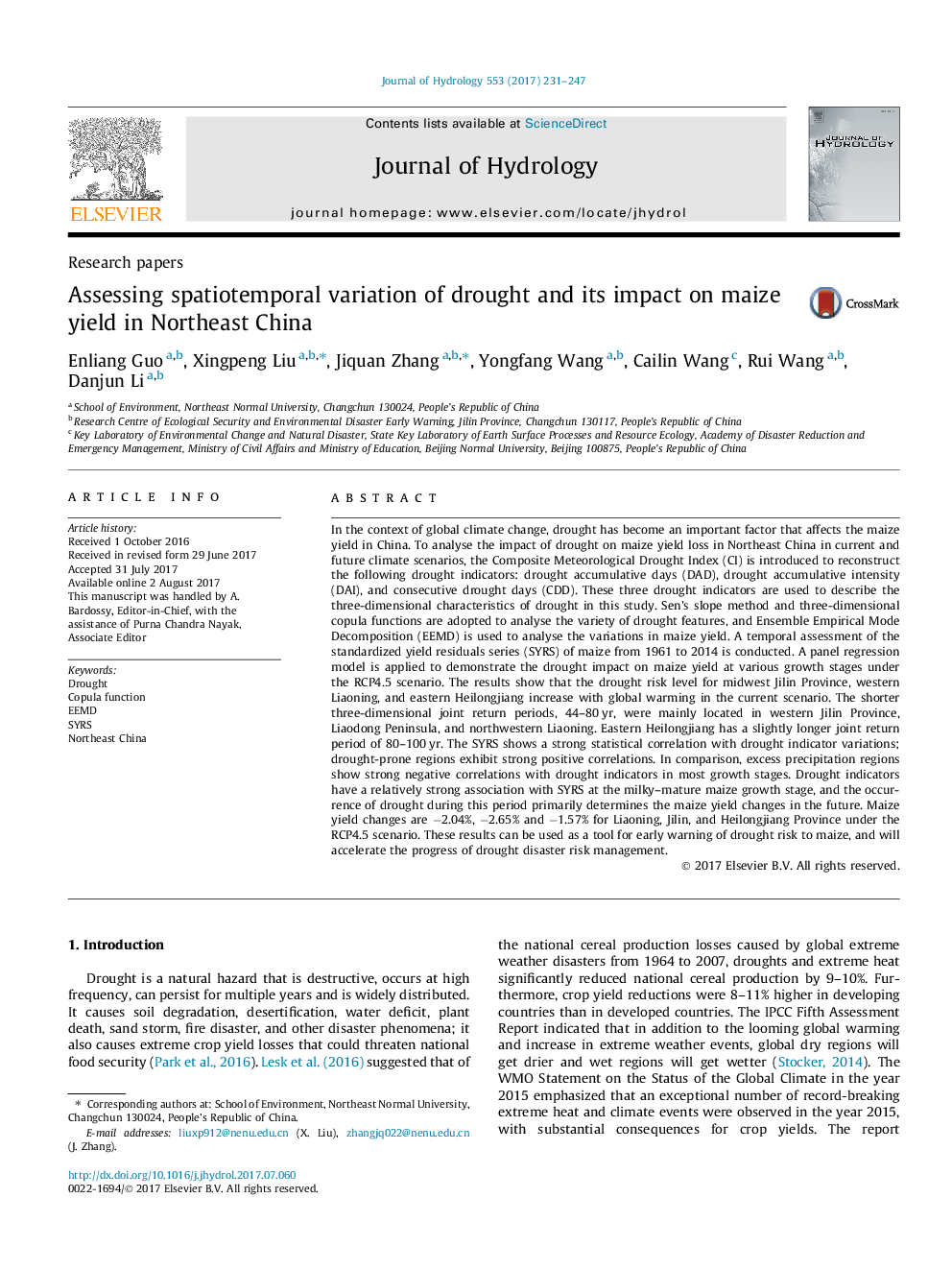| Article ID | Journal | Published Year | Pages | File Type |
|---|---|---|---|---|
| 5770814 | Journal of Hydrology | 2017 | 17 Pages |
â¢Three-dimensional copula functions are used to analyse the variation of drought.â¢EEMD is adopted to analyse the variation tendency of maize yield.â¢Assessing the impact on yield of the maize at various growth stages under RCP4.5.â¢The occurrence of drought in late growth period determines the maize yield changes.â¢Maize yield losses are most severe in Jilin Province under RCP4.5.
In the context of global climate change, drought has become an important factor that affects the maize yield in China. To analyse the impact of drought on maize yield loss in Northeast China in current and future climate scenarios, the Composite Meteorological Drought Index (CI) is introduced to reconstruct the following drought indicators: drought accumulative days (DAD), drought accumulative intensity (DAI), and consecutive drought days (CDD). These three drought indicators are used to describe the three-dimensional characteristics of drought in this study. Sen's slope method and three-dimensional copula functions are adopted to analyse the variety of drought features, and Ensemble Empirical Mode Decomposition (EEMD) is used to analyse the variations in maize yield. A temporal assessment of the standardized yield residuals series (SYRS) of maize from 1961 to 2014 is conducted. A panel regression model is applied to demonstrate the drought impact on maize yield at various growth stages under the RCP4.5 scenario. The results show that the drought risk level for midwest Jilin Province, western Liaoning, and eastern Heilongjiang increase with global warming in the current scenario. The shorter three-dimensional joint return periods, 44-80Â yr, were mainly located in western Jilin Province, Liaodong Peninsula, and northwestern Liaoning. Eastern Heilongjiang has a slightly longer joint return period of 80-100Â yr. The SYRS shows a strong statistical correlation with drought indicator variations; drought-prone regions exhibit strong positive correlations. In comparison, excess precipitation regions show strong negative correlations with drought indicators in most growth stages. Drought indicators have a relatively strong association with SYRS at the milky-mature maize growth stage, and the occurrence of drought during this period primarily determines the maize yield changes in the future. Maize yield changes are â2.04%, â2.65% and â1.57% for Liaoning, Jilin, and Heilongjiang Province under the RCP4.5 scenario. These results can be used as a tool for early warning of drought risk to maize, and will accelerate the progress of drought disaster risk management.
